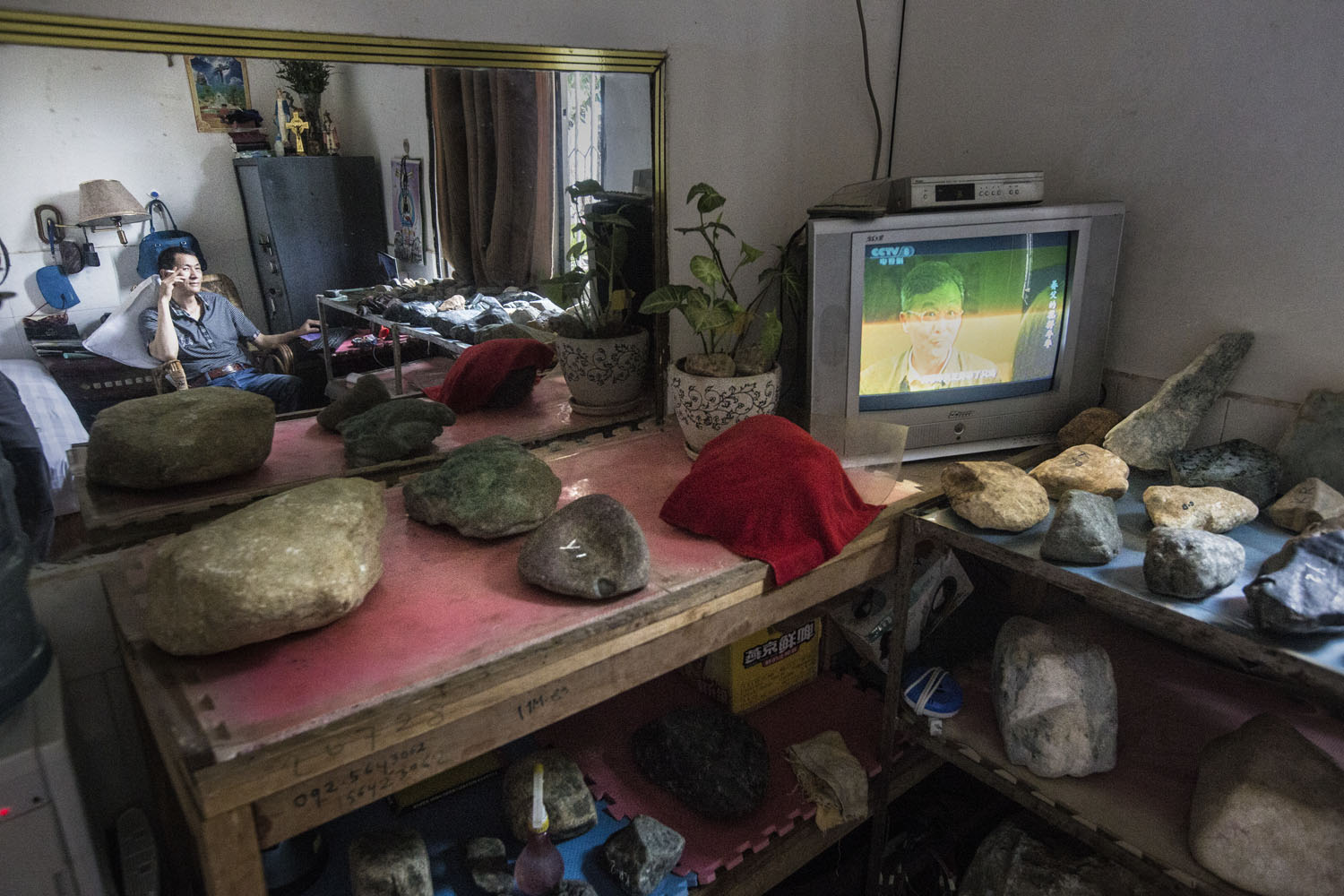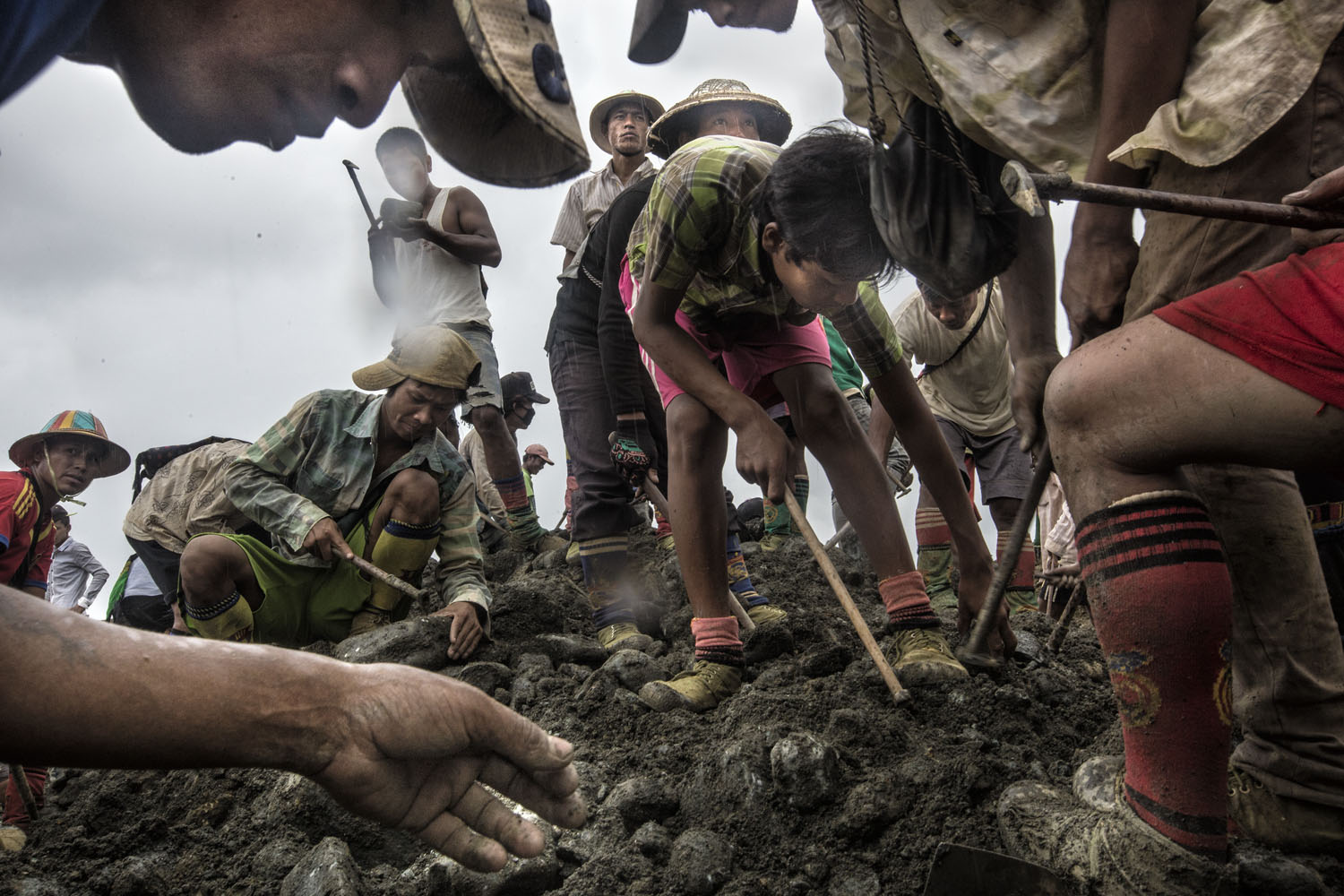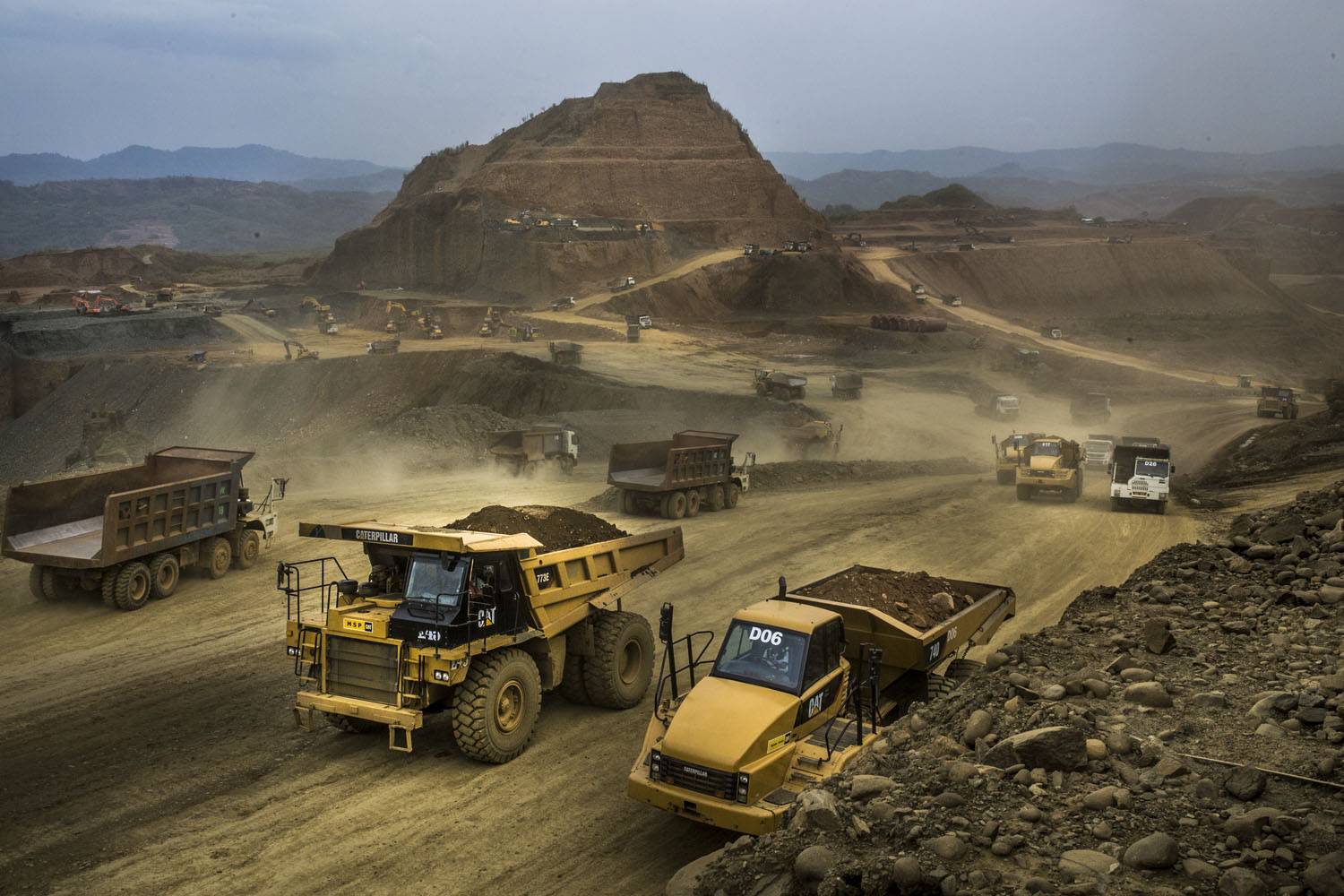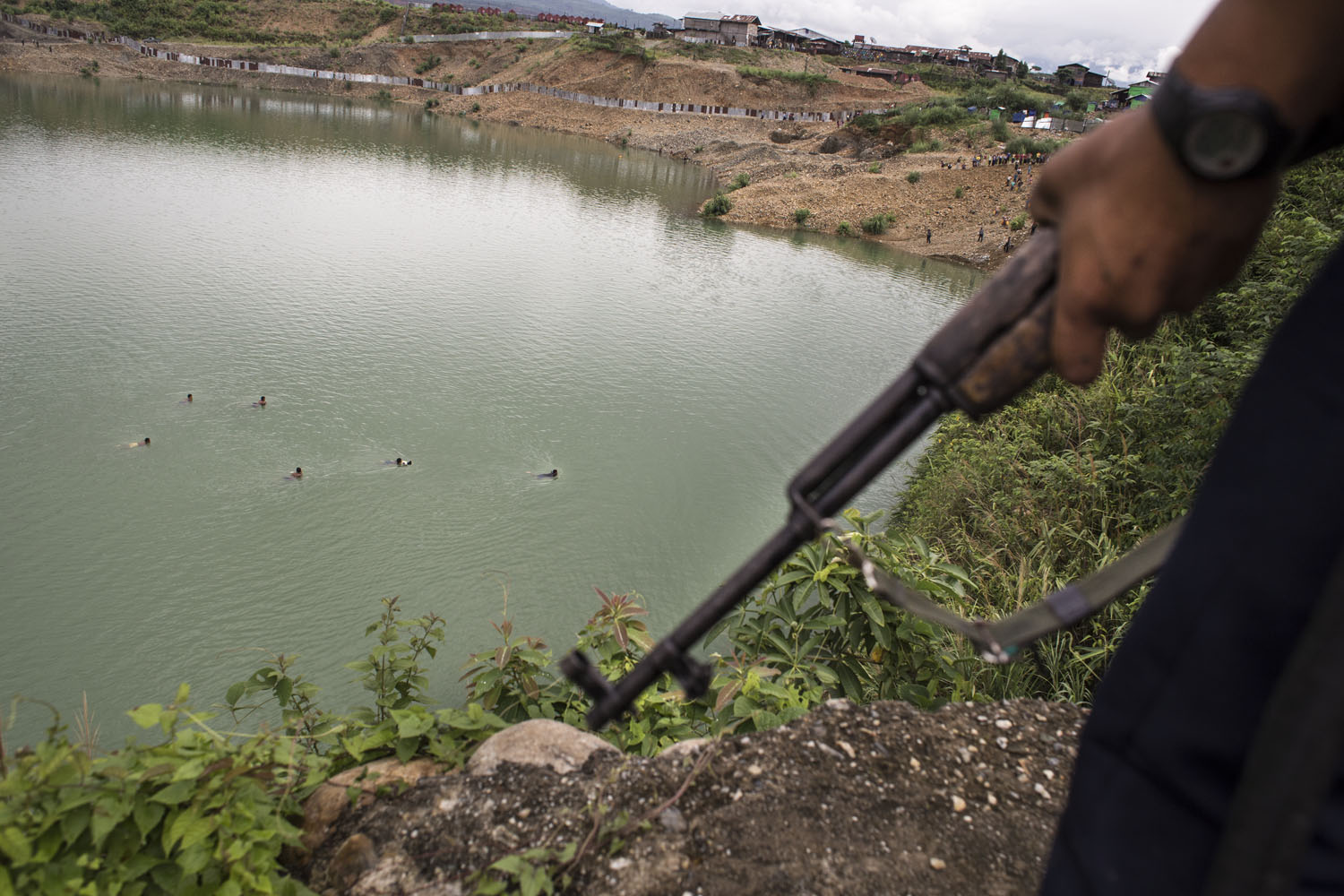
For the Chinese, jade’s luster represents good fortune, prosperity and longevity. For impoverished Burmese toiling in squalid mines, it represents escape, or at least the dream of it.
The reality, as captured by Burmese photographer Minzayar Oo, is that as Burma emerges from a half-century of military dictatorship, with landmark general elections on Sunday, this precious stone is all about the Southeast Asian nation’s enduring misery.
“We have this rich natural resource but it is not helping the people at all,” Minzayar Oo, who made five trips to document Burma’s jade trade over two years, tells TIME.
Kachin state, the desperately deprived northernmost region of Burma (which is officially known as Myanmar), is the world’s foremost source of top quality jade. A single milky-green amulet from here can fetch tens of thousands of dollars in the swanky jewelers of Shanghai and Hong Kong.
In military-dominated Burma, though, virtually all this wealth is pocketed by cronies of the former junta and local rebel armies, with fierce battles fought for control of the best quarries. The precious stones are then ghosted across the porous Sino-Burmese border with the help of venal officials.
The illicit profits are enormous: New analysis by London-based NGO Global Witness put the size of Burma’s jade industry at $31 billion in 2014, equating to nearly half of national GDP and over 46 times the nation’s spending on healthcare. But the same year’s tax receipts from jade stand at just $374 million — representing not even 2% of production.
“Myanmar’s jade business may be the biggest natural resource heist in modern history,” says Global Witness analyst Juman Kubba. “Local people suffer terrible abuses and see their natural inheritance ripped out from beneath their feet.”

Presidential spokesman Ye Htut told reporters on Oct. 26 that the Burmese government does not plan to respond to Global Witness’s allegations nor investigate its findings. And so the convoys of bright yellow diggers will continue to gouge the dark earth in search of mineral deposits.
Burma’s jade industry is split between military-aligned companies with government mining licenses, and the swarms of illegal miners “who, with little more than an iron rod and a pair of worn-out shoes, wander around the piles of rubble dumped by companies and look for stones,” says Minzayar Oo, whose work was supported by the Natural Resource Governance Institute NGO.
The 27-year-old photographer, a Rangoon native, is a regular visitor to the mining hub of Hpakant. A quarter of Burma’s 51 million population subsists on less than $1.25 a day, meaning young and old flock to this wasteland to eke out a hardscrabble existence.
With little oversight, workplace accidents are common; a single landslide can bury dozens of miners, especially during sudden monsoonal downpours, and there is the constant risk of arrest, assault and extortion by the police. Industrial waste imperils not just the miners but the wider community as well.
“When I first got there I was shocked by the vast landscape,” says Minzayar Oo, “and then I realized that this wasn’t actually natural but formed from piles of half-mined mountains.”
This desecration of nature extends to the miners themselves — typically gaunt from inadequate food, bent double from years of hacking through the flinty earth and all too frequently ravaged by drugs. Heroin abuse is endemic in mining communities, and grim shooting galleries, where miners swap a $2 lump of gleaming jade for a fleeting opiate glow, pepper the stark landscape. The scarcity of clean needles means HIV/Aids is rife.
“Without [heroin] I am very tired,” one addict tells Minzayar Oo. “But after the shot, I feel happy to work and I can chase my dreams again.”
Minzayar Oo is a photojournalist based in Rangoon, Burma. Follow him on Twitter @minzayar88.
Charlie Campbell is Associate Editor for TIME, focusing on Southeast Asia. Follow him on Twitter @charliecamp6ell.
Mikko Takkunen, who edited this photo essay, is the International Photo Editor at TIME.com. Follow him on Twitter @photojournalism.











More Must-Reads from TIME
- How Donald Trump Won
- The Best Inventions of 2024
- Why Sleep Is the Key to Living Longer
- Robert Zemeckis Just Wants to Move You
- How to Break 8 Toxic Communication Habits
- Nicola Coughlan Bet on Herself—And Won
- Why Vinegar Is So Good for You
- Meet TIME's Newest Class of Next Generation Leaders
Write to Charlie Campbell at charlie.campbell@time.com